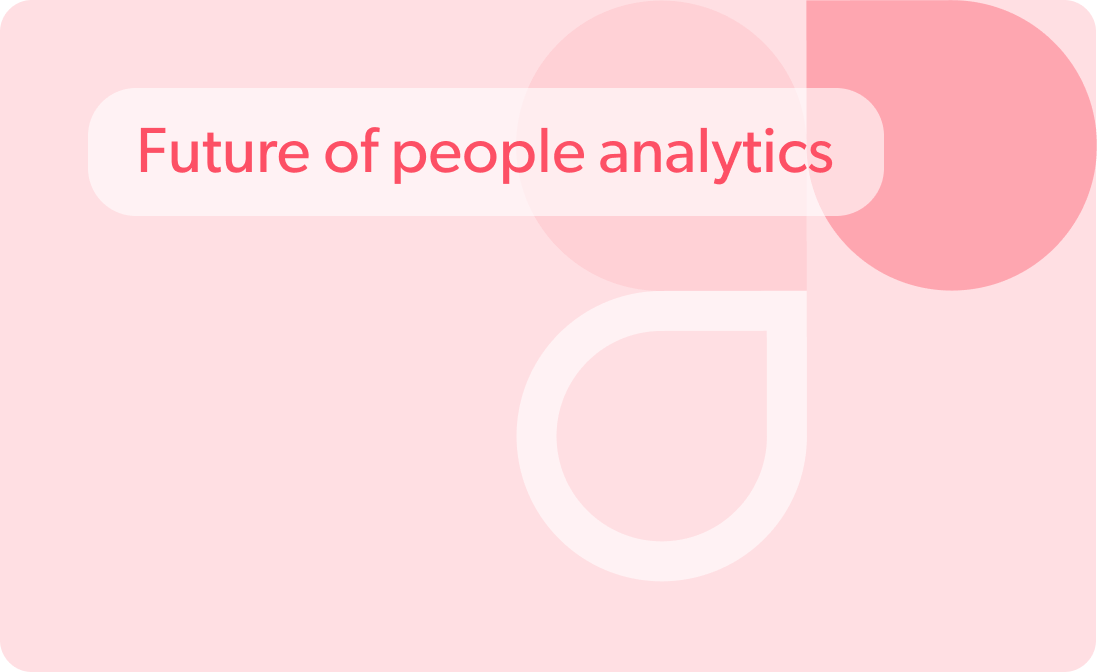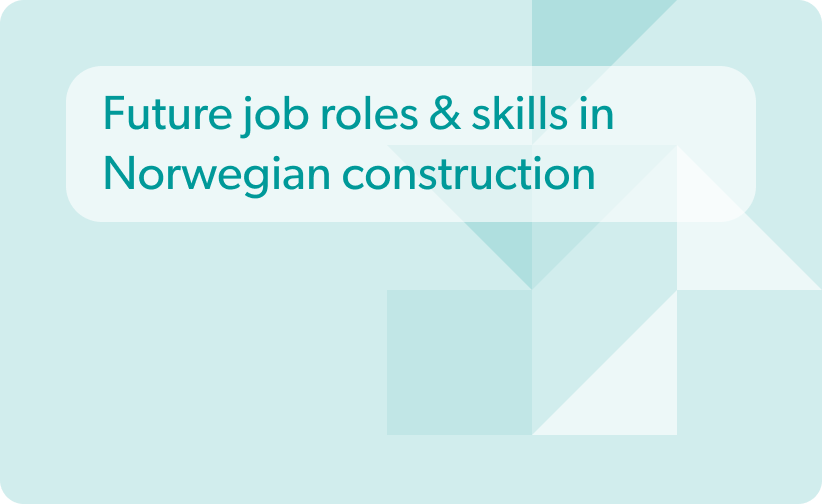The 5 Great workforce trends that have shaped and are shaping the future of work
The 5 Great workforce trends
Few things stay the same over time, and the workforce is no exception. Between 2020 and 2023, nearly every aspect of the global workforce has changed. Every year, the workforce looks slightly different.
Here’s a look at the most dramatic trends that have shaken and transformed the global workforce.
#TheGreatResignation
What was the Great Resignation (aka the Big Quit)?
The Great Resignation, also known as the Big Quit, was a phenomenon in which employees voluntarily left their jobs in unprecedented numbers. It officially began in late 2020 or early 2021, after the quit rate (the number of monthly resignations divided by total employment) dropped sharply during the early stages of the COVID-19 pandemic.
As COVID-19 vaccines became available and restrictions eased, many companies resumed business, and job openings increased. At the same time, the quit rate nearly doubled, from about 1.6% in early 2020 to about 3% in late 2021.
What reasons did employees give for quitting their jobs?
According to a Pew Research Center survey, “low pay (63%), no opportunities for advancement (63%), and feeling disrespected at work (57%)” were the top three reasons respondents gave for leaving their jobs during this particular wave of resignations.
What happened after people resigned in large numbers?
Where did all these people go after resigning from their jobs? The answer is not surprising — they got other jobs. Employees weren’t just resigning to resign; they were resigning to leverage their skills to get jobs with better pay, better benefits, and more flexibility.
With unemployment low and demand for labor high, companies had to compete with each other for job seekers by offering incentives. While some companies fought their way out by offering higher wages, others offered retention incentives by creating more flexible work conditions, such as the ability to work remotely.
#TheGreatReassessment
What was the Great Reassessment?
Millions of people have left their jobs since the start of the pandemic. Being at home, many employees began reassessing their careers and priorities and rethinking what they wanted to do with their lives. Factors in people’s reassessments include:
Health and balance. The remote office blurred the lines between work and home. Without any sense of separation or balance, mental health suffered.
Family priority. COVID-19 reminded people that family is most important, so workers reprioritized and left for jobs that allowed them to focus on their families.
Competition. It’s clear that people didn’t resign because they were tired of working. They were just tired of working in jobs that didn’t meet their needs. Many workers reached the breaking point, so they reassessed what was most important and took steps to align their work lives and personal priorities.
How did HR leaders deal with the Great Reassessment?
During the Great Reassessment, HR leaders grappled with the challenges of retaining and attracting the best employees by asking how they could build a culture and provide benefits that allowed employees to balance their lives, stay engaged, and be productive. The answers and solutions led to the Great Reshuffle.
#TheGreatReshuffle
What was the Great Reshuffle all about?
The Great Reshuffle was about employees leaving for something different. HR leaders were now asking: How do we attract quality talent, and what do we need to do to keep this talent? Here is everything you need to know about Great Reshuffle and how organizations can survive it.
The talent shortage causing problems in economies globally is a direct result of employees simply saying no more. No more stress, no more long hours, and no more feeling underappreciated. The Great Reshuffle is about employees reshuffling their jobs to fit a comfortable and flexible work–life balance.
In Microsoft’s 2022 Work Trend Index report, we can see how much the job market has changed due to COVID-19. Since the start of the pandemic, 47% of employees began to value their personal and family life more, and 53% said they would prioritize their health and well-being over their job now more than in pre-pandemic times.
How did HR leaders deal with the Great Reshuffle?
In summary, the Great Reshuffle marked a shift in work–life balance in favor of employees, not employers. Organizations are under increasing pressure to invest in employee engagement and well-being initiatives that will result in employee retention while attracting quality talent. For example:
Offering flexible work arrangements
Increased flexibility in their personal lives and no commuting have become the new norm for many employees, and losing these benefits could be a deal-breaker. This could mean embracing fully remote job opportunities, hybrid schedules, or four-day work weeks.
Fostering a positive work environment
Job seekers and employees are now paying more attention to an organization’s culture than ever before. Highlighting new or upcoming employee development initiatives or professional development opportunities in job advertisements or on your internal communications site is a great way to attract and retain quality candidates.
Predictable scheduling
Unpredictable work scheduling affects an employee’s personal well-being and leads to burnout. Organizations must start embracing digital transformation tools that can help keep track of and maintain efficient employee schedules. This way, when issues arise, the digital system can quickly correct them and avoid last-minute changes that may stress employees.
#TheGreatRegret/Remorse
What was the Great Regret/Remorse all about?
When companies sought to bring employees back on-site, some employees rebelled and started looking for something else. Many employees believed that something better existed, so they submitted their resignation and took a giant leap into the unknown. For many individuals, that leap proved successful, as they landed a new role that fulfilled missing needs. But not all pastures turned out to be greener.
Uncertainty transitioned into remorse for others, as they did not find something better than what they had. What they found was often worse than anticipated, leading to the growing phenomenon called the Great Remorse.
Impacts of the Great Remorse
In 2022, the World Economic Forum published a study showing that a quarter of employees who quit in the previous year regretted their decision because their work–life balance had not improved but had worsened. Their new job was not what they thought it would be, or they missed their previous organization’s culture. Employees who leave their employer, work for another employer, and then return to their former employer are called boomerang employees.
Boomerang employees offer many benefits to an organization. They are familiar with the organization’s culture and job responsibilities, so less time is spent onboarding them.
They also have a higher time-to-productivity ratio. The company saves a tremendous amount of money by not having to invest time and financial resources in the new hiring process. They don’t have to post a vacancy, screen applicants, conduct interviews, or onboard new employees.
#TheGreatRetention
The Great Resignation combined several factors, including stress and other mental health concerns, pandemic burnout, and poor employee experiences, leading people to consider their options. The quantity of job openings also provided unhappy employees with lots of opportunities to move on.
Regardless of the cause, the implications are clear — organizations must act now to ensure they don’t lose their top talent, which requires a strong focus on the employee experience and well-being at work.
Organizations across all sectors need to do better at attracting and retaining staff. But while the Great Resignation had posed many challenges; it should also be seen as an opportunity. Highly skilled and experienced workers are on the move — and if you do the right things, you can snap them up.
What does the Great Retention call for?
How to retain employees in the face of the Great Resignation is a question all companies need to ask themselves. Here are six things you can do to attract and retain the best people.
1. Support employee well-being
Supporting your employees’ well-being, which means ensuring employees’ mental, physical, and financial health, is essential to retaining your top talent. HR leaders can address these pillars of well-being by implementing employee benefit and reward programs.
2. Make sure you have a caring culture
An ethical work culture built on caring and respect takes work, but it’s essential for employee engagement and retention. Make sure managers have regular check-ins with their teams, particularly with remote workers, and provide an outlet for raising issues and concerns.
3. Hire the right people
You won’t retain employees if you don’t hire the right people in the first place. If you’ve hired the wrong person for the wrong role, or someone who isn’t a good fit for the organization, they’ll soon become dissatisfied and start looking elsewhere. Regularly review the interview process that led to poor hires and consider cultural fit when interviewing applicants.
4. Help employees with career progression
People want to feel like they’re getting ahead, but that doesn’t necessarily mean offering more money. HR leaders need to invest in their people and support their learning and development.
Allow time for employees to attend training seminars and conferences (either virtually or in person), and develop robust internal training and personal development plans (PDPs) that are regularly reviewed and updated by both the employee and their manager.
5. Have a solid orientation process
The first few weeks on the job are essential to helping an employee settle into the role and feel at home within the organization. An employee orientation process can have a significant impact on retention by diving deep into the new employee’s position, the company culture, and how the employee can thrive.
Kickoff a successful hiring culture
Our smartHire feature speeds up your hiring process by bringing together everything you need to know right from time-to-hire rates, salary ranges in the particular area, and more to attract the top talent in one place.
Conclusion
Continuing the Great Retention will be one of the biggest challenges in 2023 for organizations across sectors. But by investing time and resources in the right places, you could be ideally placed to take advantage of a large pool of people looking for a new challenge.
HRForecast can help you identify the ideal employee experience strategy tailored to your organization’s specific needs — so what are you waiting for? Get in touch with our team of experts today.
Stay up to date with our newsletter
Every month, we’ll send you a curated newsletter with our updates and the latest industry news.



























 info@hrforecast.de
info@hrforecast.de
 +49 89 215384810
+49 89 215384810






